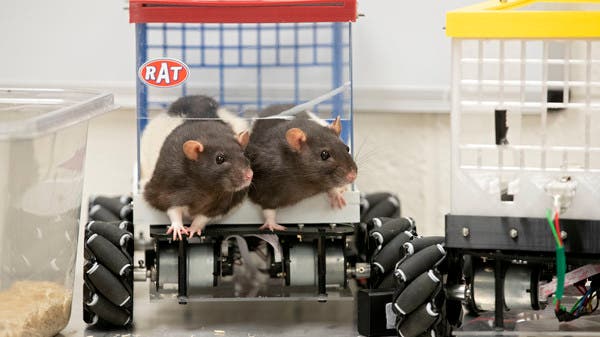After surprising the world with their ability to drive tiny automobiles in 2019, University of Richmond rats are now part of a groundbreaking experiment that investigates the role of environmental enrichment in brain shape, which in the long run will assist address mental health problems in people.
The Black Tail rat sniffs the track for a few seconds before placing its legs on a crane and travelling at full speed. When it arrives at its goal, it eats a well-deserved reward.
According to Kelly Lambert, head of the Behavioral Neuroscience Laboratory at the University of Richmond, “this experiment draws attention to the intelligence and learning abilities of these animals.”
Lambert views one of contemporary medicine’s greatest failings to be its inability to cure mental disease with pharmaceuticals, despite the fact that pharmaceutical corporations profit from this sector.
These pharmaceutical treatments are increasingly being questioned, after the publication of a significant research in July that called into doubt the assumption that chemical imbalances, namely a shortage of serotonin, cause depression.
Kelly Lambert, on the other hand, believes behavioural treatment as critical to treating the mind, thus the small mammal research.
Our brains change from the birth to the grave, she explains, and having an active life can impact the chance of getting depression in some manner.
In a previous experiment, rats were separated into two groups: those who had to exert effort to receive a reward (in this case, digging in a pile of soil), and those who received free rewards.
In the face of difficult activities, the first group of rats outlived those who had acclimated to a state known as learned helplessness.
When the first group of rats had to swim, they produced a hormonal response that indicated stronger emotional resilience.
According to Kelly Lambert, rats who learned to drive had more emotional coherence and reduced levels of stress, which may be related to happiness with learning new abilities.
According to researcher Olivia Harding, “these creatures establish natural courses that they use all the time, and we wanted to investigate if they could keep this good sense of direction within a vehicle.”
It was not simple to learn to drive. The mice were first required to operate the controls by touching their snouts, but scientists discovered that they preferred to stand on their hind legs and drive with their front ones.
Even when the vehicle was in an unexpected location, the rats were able to control it correctly and obtain candy, demonstrating their superior cognitive abilities.
The rats in this experiment, known as black tail and multicoloured tail, demonstrated the capacity to anticipate by squirming as humans approached and speeding up in an effort to scale the cage walls.
Not all mice, like people, have the same interests: some appear to love driving themselves, others do it for rewards, and a third group doesn’t seem to care.
According to the head of the Behavioral Neuroscience Laboratory, the study of mice living in cages without enrichment of the environment, that is, without obstacle courses or activities, was not very scientifically relevant.
Mice kept in cages without environmental enrichment, for example, outperformed others when it came to driving a car.
Her most recent research, on the other hand, suggests that wild rats have larger brains than lab rats, more neurons, a larger spleen for better disease management, and substantially greater stress levels.
Which brings us to a philosophical question: Are humans like lab rats, caged animals with ecological enrichment, or wild animals? Kelly Lambert responds with a grin, “I feel more like a lab rat than a wild rat.”
Wild mice who had to forage in the litter every day and escape predators may have exhibited behaviour comparable to our ancestors, and people might learn about mental resilience from them.
.
Experiments on mice may aid in the treatment of mental illnesses in people.

